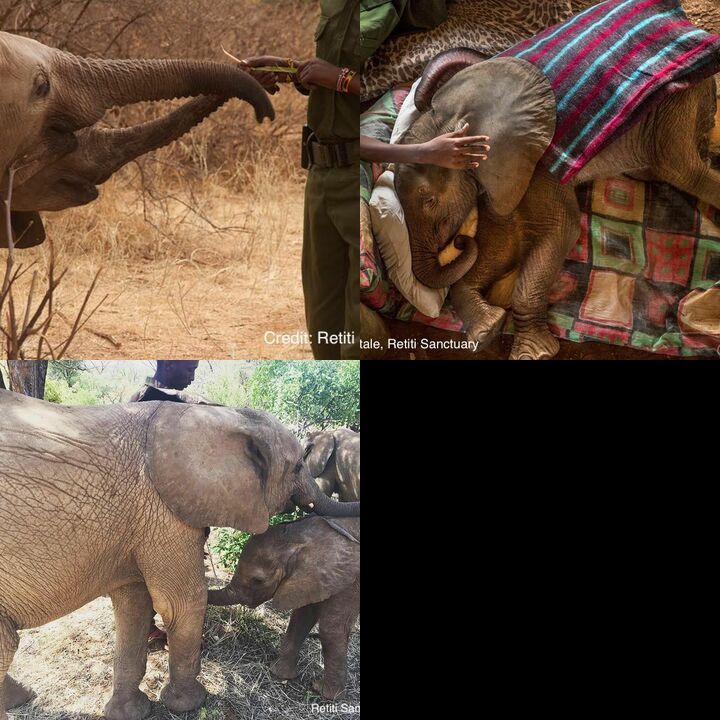Elephant Biologger Project
The Problem
African elephants, Loxodonta africana, are threatened by habitat loss for agriculture and development, poaching, and climate change. Our partner, the Namunyak Wildlife Conservancy in Samburu County of northern Kenya, is home to the Reteti Elephant Sanctuary, the first community-owned elephant orphanage in Africa. Situated in the remote Mathews Range, among Kenya’s second largest elephant population, the Retiti sanctuary opened August 2016 and rescues between five and ten orphaned elephant calves per year. The sanctuary rescues, rehabilitates, and releases elephant calves at age three, who then need to be tracked and their health monitored. The current and widely used approach for radio and GPS telemetry with elephants, collared tracking devices, are deemed unsafe or short-term in the view of Retiti, as their juvenile elephants will grow until age 15-20.
Our Proposal
We seek to develop an affordable implantable biologger solution to monitor juvenile elephants re-wilded to new non-native herds. This biologer will continue to function as the elephant grows (rather than a collar which will constrict the neck). Each of our biologgers will uplink location information via Low Power Wide Area Networks (LPWAN) to terrestrial base stations, both fixed and dynamic, which will transmit the data to the cloud, over GSM network, wifi, or Satellite. We have already reviewed the cost and efficacy of various connectivity and sensor platforms, as part of Orangutan Biologger project (semi-finalist in the 2018 Con X Prize). The majority of our efforts now focus on research and development for the sensor casing, optimization of the data transmission to maximize battery life ergo the product shelf life, and in the case of an external mount (e.g. dermal adhesion), the safety and functionality of biodegradable glue. Elephants are extremely strong, smart, diligent, and social. Thus, developing a solution which will persist for a minimum # of years is our design challenge. While our efforts are focused on an implantable design, our product design can be externally mounted on a collar and integrated into existing collaring efforts.
We Assume that...
1. Elephant health is not negatively affected by the device
2. Platform sends and receives data from device in the range
3. We are able to effectively troubleshoot data transmission in the field and train others to replicate troubleshooting protocols
4. Electronics inside the implantable remain in working condition
5. We can develop a sensor casing which maintains integrity under stress from an elephant
Constraints to Overcome
Externally mountable collars are not practical or safe for long-term use with juvenile elephants, as they grow to age 15-20. Our biologger will be designed to remain safely inside the body cavity for the duration of the elephant’s life. The advent of LPWAN technology enables us to develop a much smaller tracking device plus a longer battery life, due to its low power usage. It also enables us to provide a service at a much lower cost, as the system requires fewer base stations. Data will be transmitted via Satellite or GSM (when available), providing multiple transmission possibilities should there be chinks in the system due to power outages or lack of signal. With fail-safes designed into the platform, near-instantaneous and reliable observation of the GPS location of an animal within seconds of it being recorded.
Current Work
During the next 3-6 months we are collaborating with a medical device design firm to develop the safest form for implantation. We will gather feedback on our designs from our elephant biologists and veterinarians those who have experience with elephant surgery. Using this feedback, we will manufacture three elephant-proof sensor-housing prototypes for our first pilot study. Simultaneously, we establish our partnership with a Long Range Low Power Network provider, Sigfox. We will set up and deploy the base station in a controlled environment in the U.S., de-bug, and establish a standard operating procedure for setting up the base station at Retiti, in northern Kenya.
Current Needs
Contracting with a medical device design firm for research and development, which we estimate will cost $10k’s. We hope to minimize this cost by leveraging our own manufacturing capabilities, which are numerous, in house. We will have travel expenses to conduct a radio propagation study onsite.

